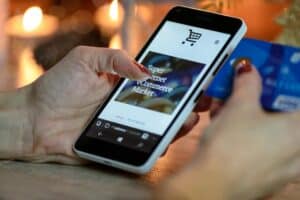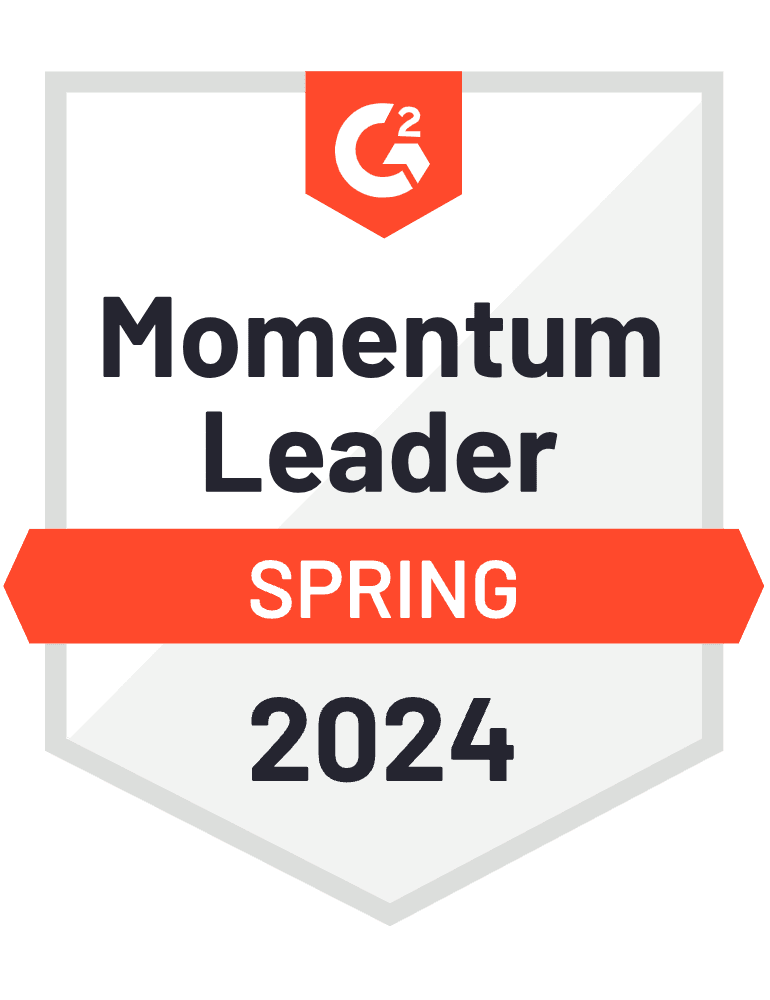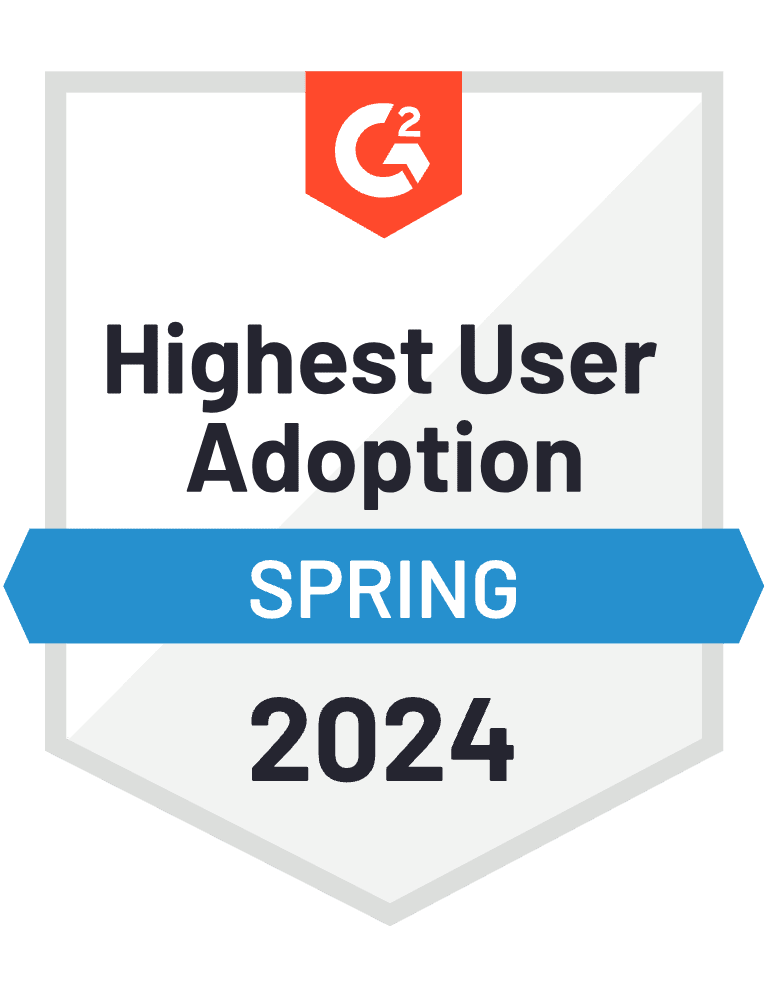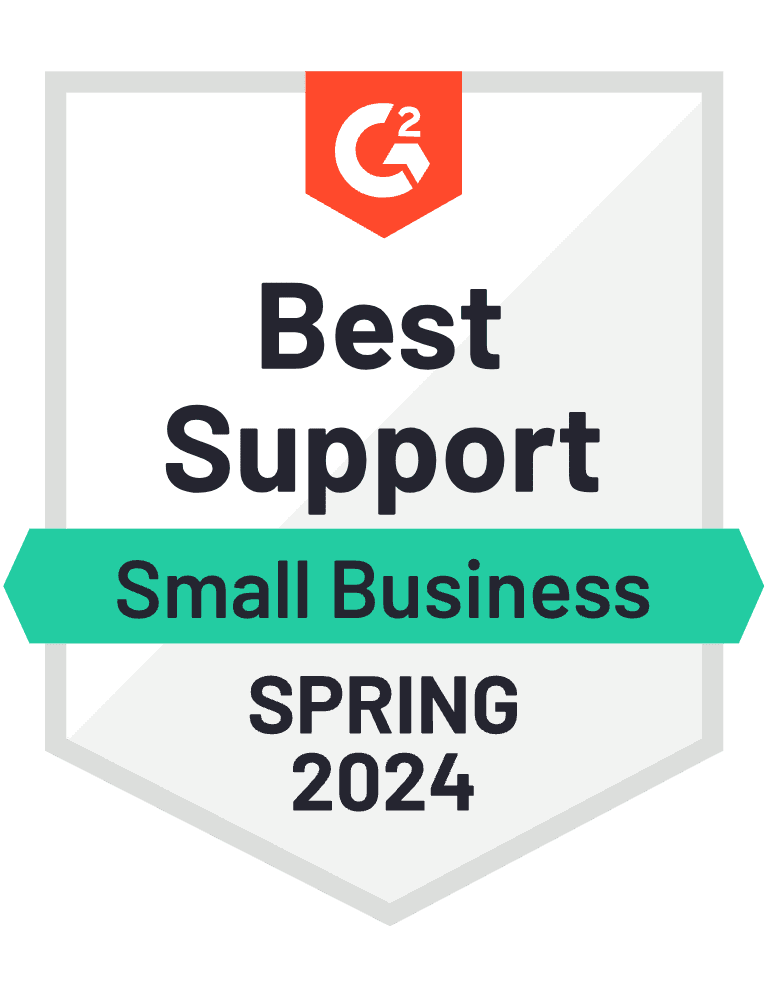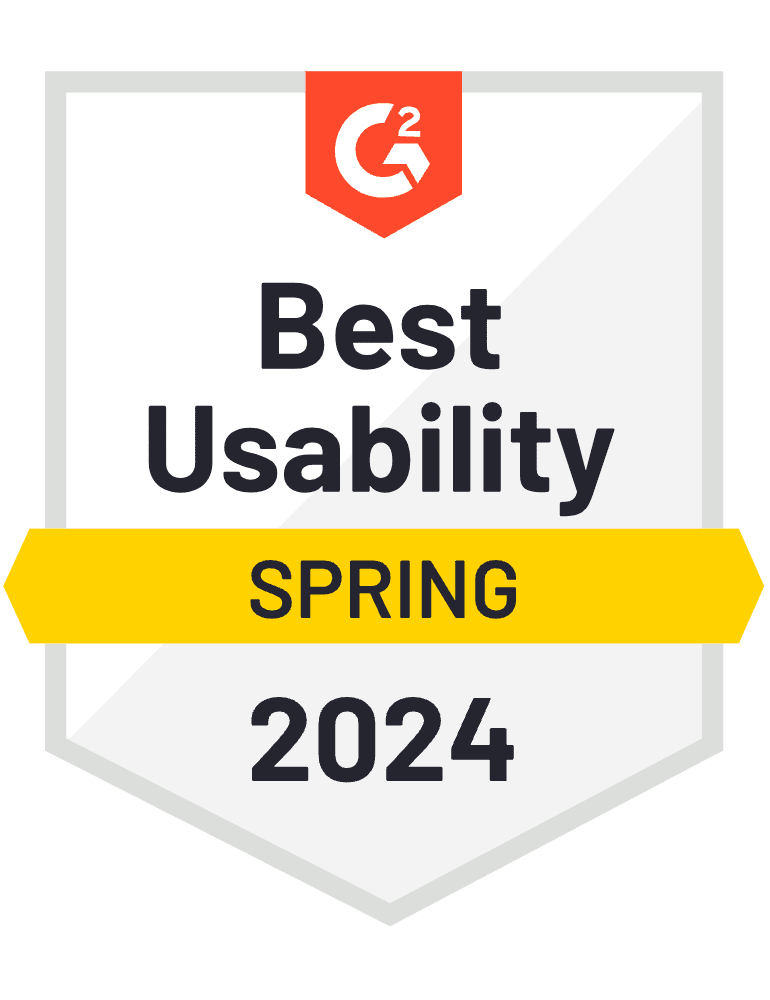B2B marketers understand the importance of both demand and lead generation. They know these terms are necessary for their marketing strategies; that’s never been debatable. The issue that arises concerns the interchangeability of these terms: are demand generation and lead generation the same principle or not?
This is like asking whether your left or right leg is more important for walking. Both limbs get you where you want to go when used in perfect harmony. The concept applies to demand and lead generation too. These principles work best when used together because each serves a distinct purpose in your marketing plan.
Imagine a shelf that houses all your favorite books, except the books keep falling over. You buy a pair of aesthetic bookends and fix the problem. Now, your shelf looks good and you’ve practically solved your problem. Similarly, demand and lead generation are the bookends to any successful marketing strategy.
Get ready to take detailed meeting notes as we dive into the difference between demand and lead generation.
Why Are These Terms Commonly Confused?
The reason these terms are commonly confused is that they share the same end goal, i.e., expanding your ecommerce business. Like the previously mentioned bookends, these principles encompass the marketing funnel. Demand generation starts the consumer journey and lead generation ends it since it usually leads to queries or purchases.
These principles work closely and accomplish almost similar objectives. This is also why a lot of marketers use them interchangeably. It’s not the worst mistake to make but it might cost you a fair penny.

Distinguishing between demand and lead generation will help you generate specific leads that convert to revenue, resulting in a lower Cost Per Lead (CPL). Your marketing budget will result in the ROIs that most benefit your overall structure.
Think of it as cold calling vs. calling someone back. You can use contact center software to call random people in hopes of converting them to customers. They will become aware of your product/service but might hang up. This is an example of demand generation.
Alternatively, calling a potential customer who left a query will result in you getting their information in exchange for a product/service. This is an example of lead generation.
Let’s take a deeper look at the main differences between the two terms.
Demand Generation: The Definition
Picture the marketing funnel. The funnel shows a consumer’s journey as they move through the stages of awareness, interest, deliberation, action, and more. Demand generation is at the beginning of the funnel because it creates brand awareness and gets eyeballs.
Think of a company that sells anti-virus software. They might have the best software on the market, but it wouldn’t matter unless people knew about it. They would start with demand generation and build awareness through pop-up banners warning people about cyber attacks. This would generate initial interest in the company’s services.
If the company’s content is compelling enough, potential customers would click on the link and give their information. It would indicate that they are interested in a possible purchase. This is how demand generation leads to lead generation. It should be clear now that they are different and work best together.
Demand generation builds brand awareness and alerts consumers to problems they might not know they have. It also targets a broader audience than lead generation, which is more specific.
The ultimate goal when using demand generation is to build trust and create an impact. Lead generation aims to differentiate your company from competitors by narrowing your potential consumer base to actual consumers. You transition from offering something to everyone to providing it to certain people who will add to your revenue.

Lead Generation: The Definition
The best way to distinguish lead generation from demand generation is customer information. If the customer has to provide any of their info to access certain content, they have reached the lead generation stage.
Think about it this way. You have an app that provides online therapy and wants to market the corporate discounts. Demand generation means advertising on Instagram stories with swipe-up stickers. Your ads will be seen by everyone but not necessarily corporate entities, i.e., your target audience.
When a corporate employee stumbles across your ad and enters their details that demand turns to lead generation. You would then use tactics like an email drip or a virtual call center to connect with the consumers who have entered their details. Those people have been converted into consumers. And that is lead generation.
Effective lead generation requires marketers to think beyond copywriting. Theoretically, you could convert people through well-written Instagram posts, but that won’t work for long. Humans are visual creatures, and they remember what they can see.
Consider using innovative ad formats like short videos, Gifs, stickers, and 3D content to get your consumers’ attention. By leveraging a diverse template selection of After Effects resources, you can create visually appealing and engaging content that reflects your brand identity. Provide them a memorable experience, but don’t waste their time. Create engaging podcasts, webinars, and online workshops that people would love to sign up for. This way, they would be happy to give their details, resulting in successful lead generation.
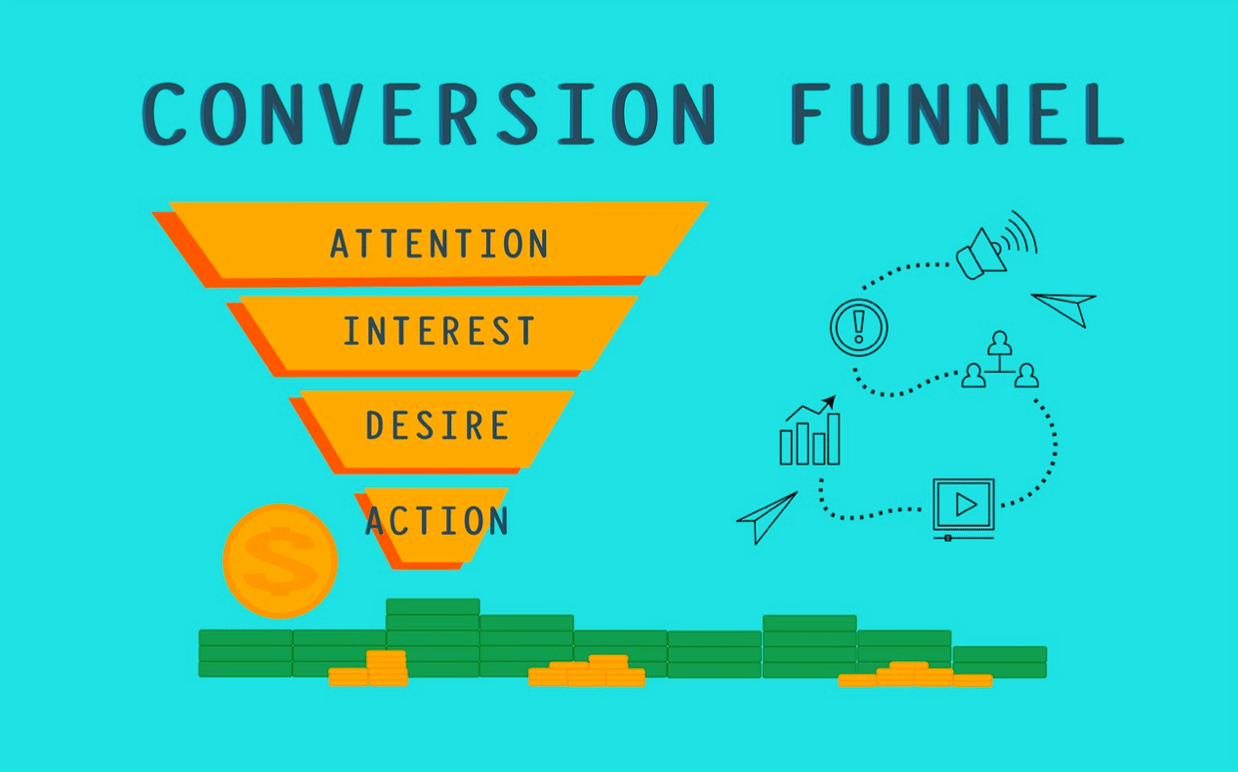
Effective Strategies for Demand Generation
There are several proven strategies you can use for efficient demand generation. A successful demand generation strategy can result in optimum marketing spending, high-quality lead generation, and consistent results. So, here’s how you can build awareness and trust among your target audience.
1. Create consumer profiles
Use detailed insights to create custom audience profiles that show you where people are in their consumer journey. While demand generation caters to a widespread pool, this doesn’t need to be a random selection.
Utilize statistics to understand your consumers’ lifestyles, online habits, shopping preferences, and digital footprints. This way, you can ensure that your adverts pop up at the right time in the right place.
A great method would be using Google SEO and tapping into keyword searches. Imagine you run a multi-level marketing company (MLM) and want to get recruits. You would want your website to be one of the first links to pop up when someone searches for multi-level marketing earnings or affiliate marketing earnings.
Demand generation is all about creating awareness, and you want to hit the sweet spot where you offer a solution to consumers while ensuring they are slightly relevant to your company. Consumer profiles are an efficient way to do that.
2. Make it an event
Events are usually good bets. People enjoy attending free events provided they get something out of them. The principle remains true for virtual and on-ground events because people like networking.
According to Bizzabo, 95% of marketers believe that on-ground events play a prominent role in a company’s marketing success. Events are a great way to create awareness about your brand while building trust with prospective consumers.
You don’t even need to host your events for this to work. All you need is to get a slot in a high-impact event that’s taking place and work from there. For example, you could have a company spokesperson talk at a TEDx event. You wouldn’t incur such costs and still disseminate company information to a large audience.
When planning an event you may wish to invest in some project management software in order to help you efficiently organize and schedule everything you need, and keep your team on track.

3. Lead with content
This might seem a little basic, but it’s important to note. Your demand generation strategy can only be as effective as your content plan. Make sure to lead with engaging, high-quality, and interactive content. You can connect with Instagram and Facebook to expand your content creation possibilities and reach a wider audience.
You can explore multiple formats like blog posts, carousel ads, digital shorts, infographics, and more. Your content should tell the story you want consumers to know. You’re likely to attract more customers if your content speaks to their problems and offers innovative solutions.
Effective Strategies for Lead Generation
You’ll know your lead generation strategy works when you’ve gathered someone’s information. It’s an excellent way to gauge interest in your business. Think of some landing pages for e-commerce websites. You’ll often see pop-ups asking you to enter your email for discount vouchers. That is lead generation.
There are many nifty ways to convert consumers through social media, and most depend on content and design. For example, you might know how to build apps and market them but not how to optimize the interface for smooth lead generation. You need to offer consumers something worthy of their personal information.
Think of apps like Snapchat or Candy Crush. People gladly give out information like birthdays, emails, locations, and more to use these apps. This is because the app requests the information in a fun and seamless way. Demand generation draws consumers in, and lead generation ensures that they stay.
Here are some ways you can optimize your lead generation.
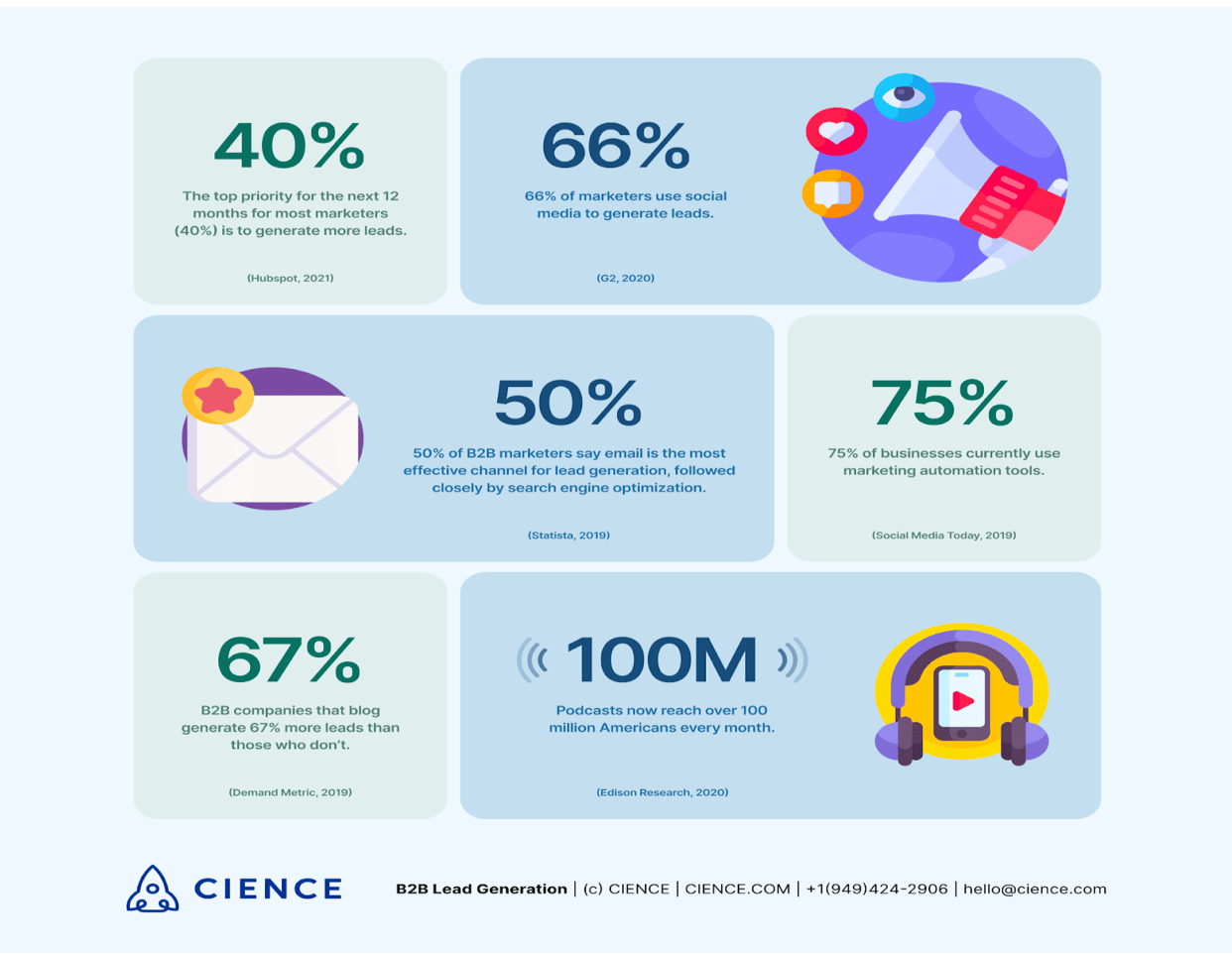
1. Put your best offer forward
One of the best marketing tips is to get creative with your offers. Any marketer could come up with a Buy One Get One Free (BOGO) sale or a blanket summer discount. Take the extra step to drumming up unique offers that separate you from competitors and make consumers curious.
Go above and beyond by offering free consultations, trials, or classes. Study your audience profile and figure out what they would be interested in. It would be the difference between a restaurant offering a standard discount coupon versus personalized cooking classes with their top chef.
The more unique your offer, the better leads you can drum up.
2. Hit below the belt
Google services allow you to check what kinds of ads your competitors are running. Take advantage of this to capture your competitors’ audience and slide into their DMs figuratively speaking.
If your company sells online web development courses, for example, you could check what businesses like Coursera are doing online. Study their ad placement and introduce a pop-up that offers a free web development lesson. Better yet, offer consumers a link to a free web development proposal example, and you’ll grab their attention.
You’ll get the information you need and all you need to do is offer a free template. Once consumers sign up, i.e., enter their email address, you’ll be able to keep them hooked through regular email drips and text reminders. It’s a win-win!
3. Ace the landing
Create a landing page that allows seamless lead generation. Ensure the consumer doesn’t have to absorb a lot of information when they land. The Internet is cluttered enough; you don’t want potential customers to shut your tab because of information overload. An optimized online store will not have a landing page with too many pop-ups or clashing visuals. Keep it minimal and classic.
Some websites use transparent windows that pop up on the screen and ask consumers for their information. They offer discounts or special info in return. These windows are usually easy to close if you don’t want to interact with them.
Ensure your consumers don’t feel harassed when they land on your website. The best demand generation tactics will fail if your landing page is a cluttered mess.
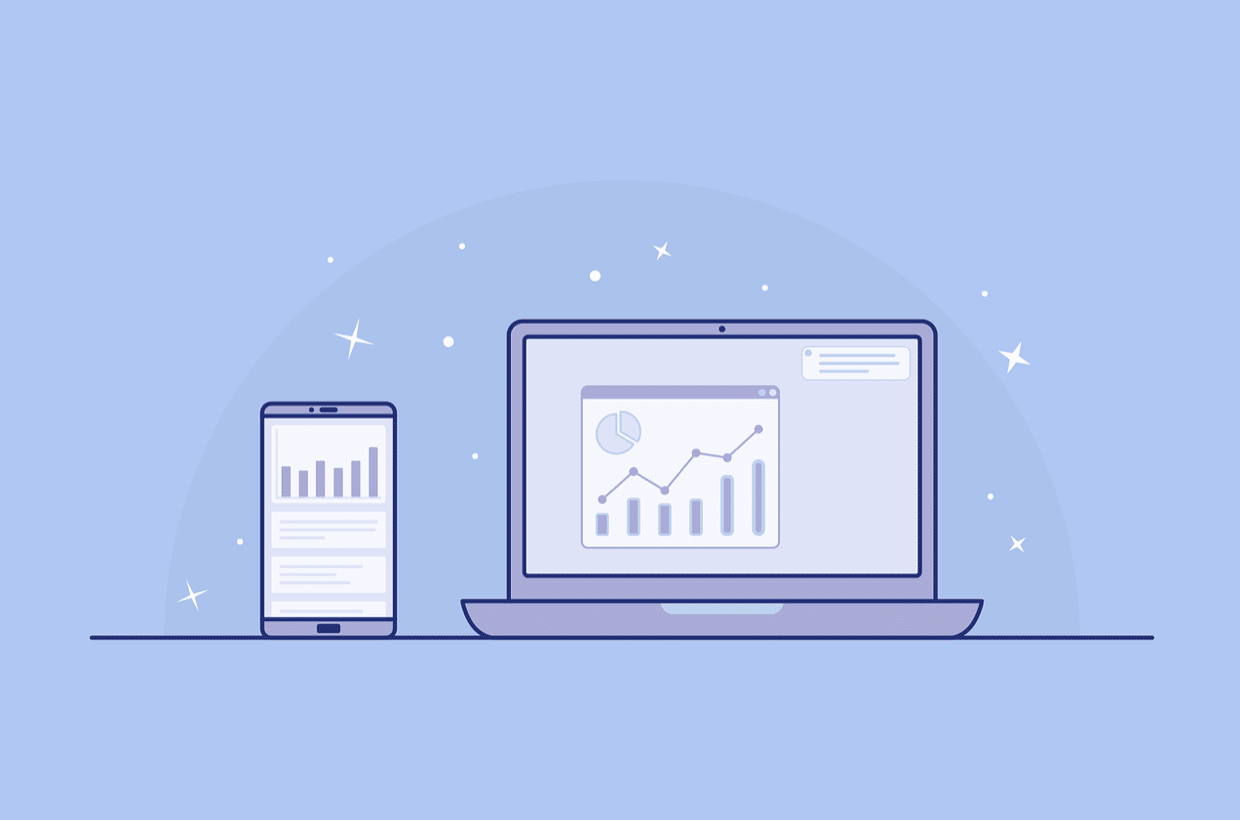
It’s All About Metrics
The difference between demand and lead generation is clear. The question remains: how do you know when they’re working? There are various ways to track your campaign performance based on strategy.
Demand generation can be analyzed using KPIs like percentage of market share, organic versus paid traffic, impressions, reach, and cost per mile (CMP).
The ROI for lead generation can be tracked using different KPIs. These include conversation rate, social media subscribers, social media engagement, number of sales leads, customer acquisition rate, website queries, and others.
An additional step is to monitor your results throughout the campaign. You’ll need to ensure that your product/service ends where you want it. For example, a white paper about machine learning might have a high download rate but by the wrong audience.
It wouldn’t make sense for the paper to end up with someone interested in baking. It would make more sense for a consumer who is curious about the benefits of MLOps or wants to know why we need MLOps to download it.
You can effectively track your ROIs, but you’ll only get the results you want when you use demand and lead generation in perfect harmony.
Bio:
Jessica Day – Senior Director, Marketing Strategy, Dialpad
Jessica Day is the Senior Director for Marketing Strategy at Dialpad, a modern call center solutions for enterprises that takes every kind of conversation to the next level—turning conversations into opportunities. Jessica is an expert in collaborating with multifunctional teams to execute and optimize marketing efforts, for both company and client campaigns. Jessica Day also published articles for domains such as Women Love Tech and HeyCarson. Here is her LinkedIn.





